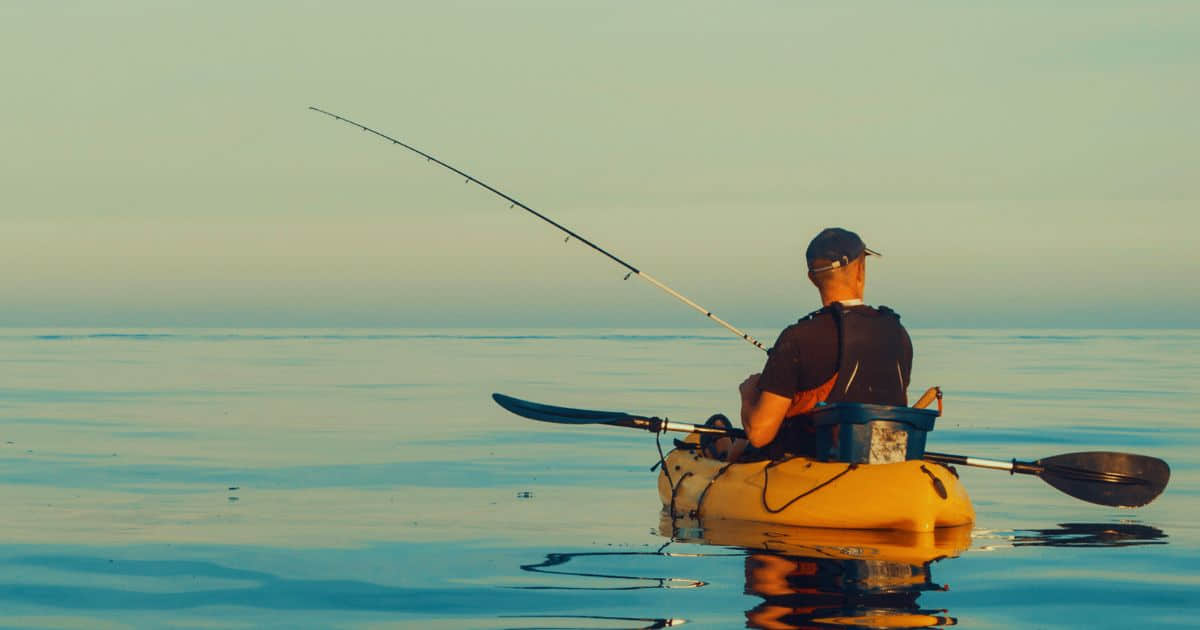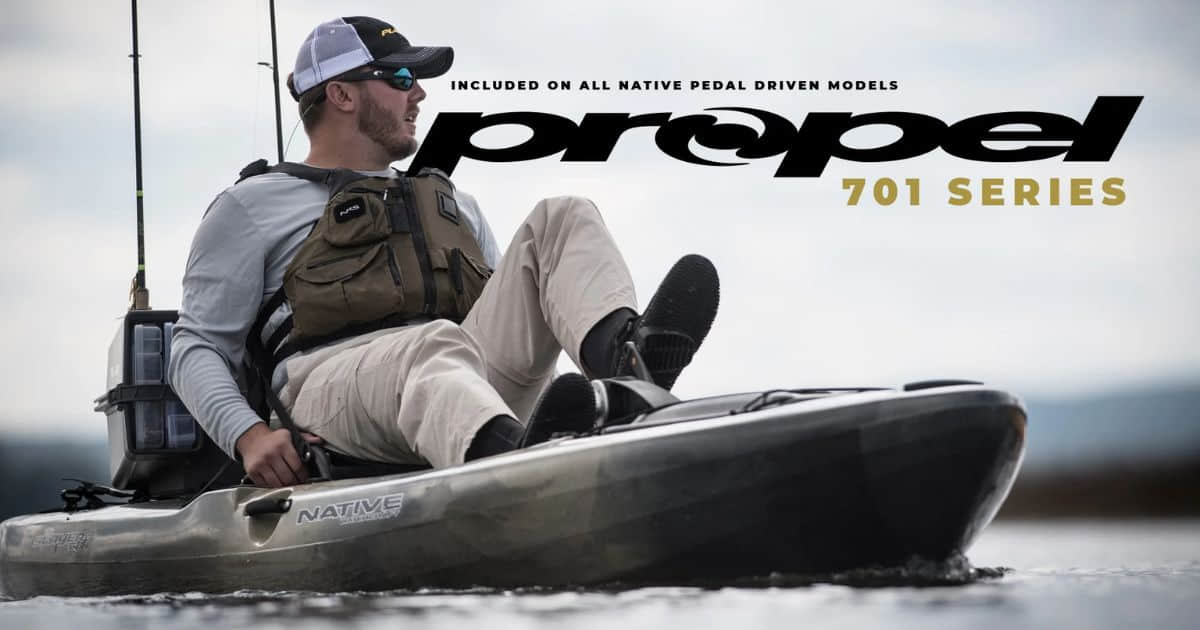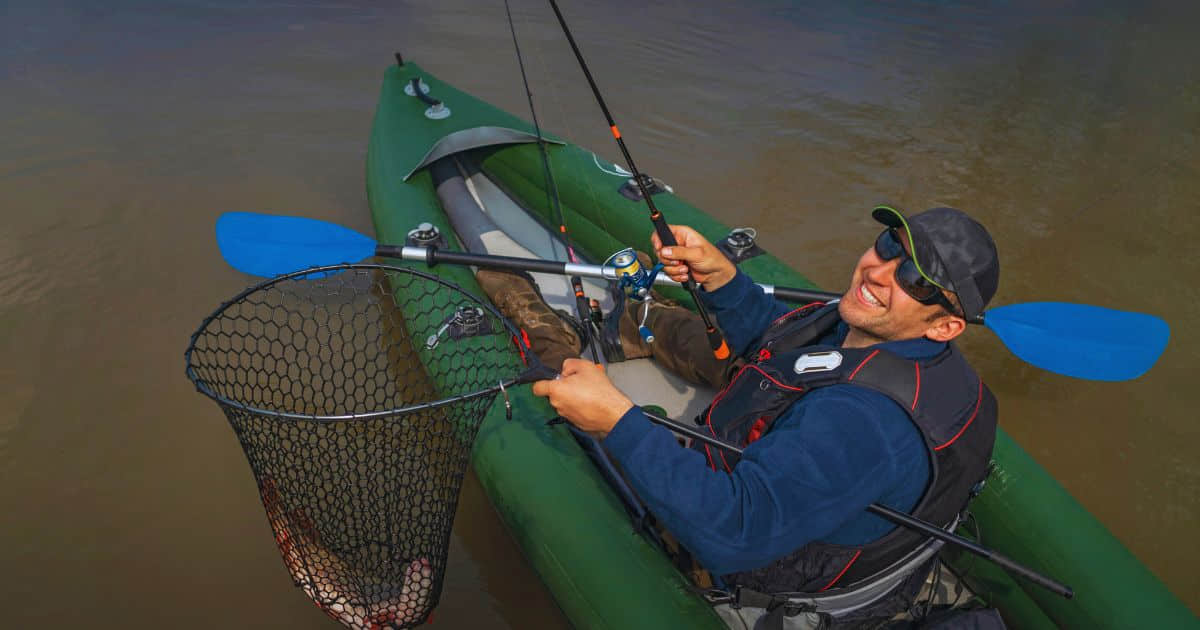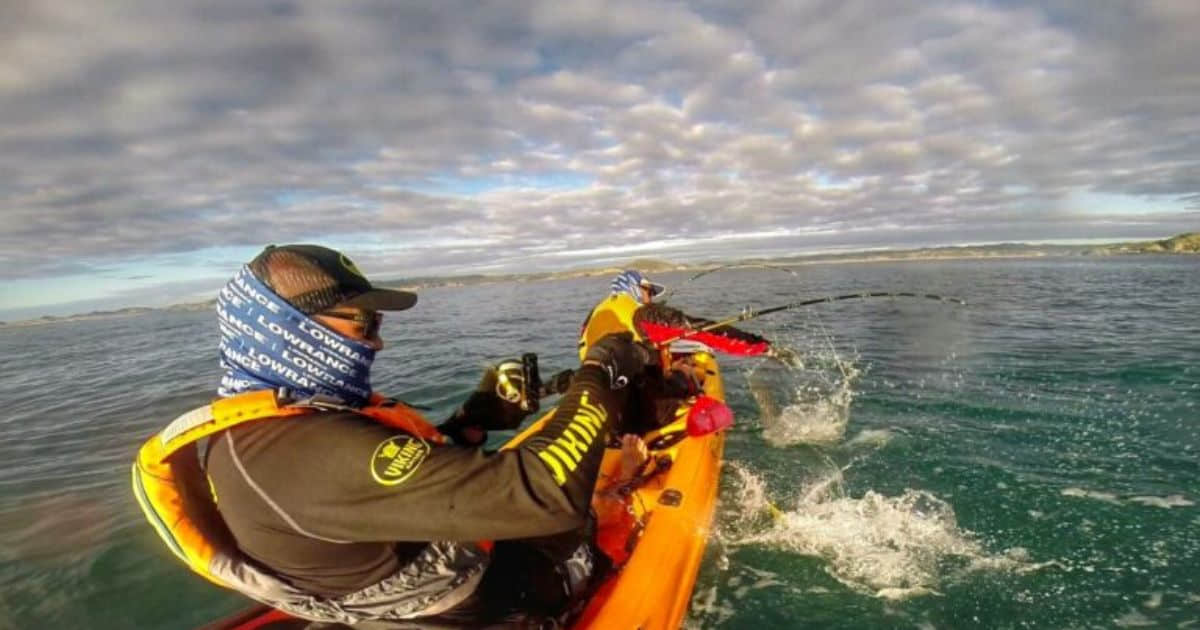Trading : 7am to 5pm (Mon-Sun)
Call Us : (03) 7071 0777
Email Us : sales@primalhunter.com.au
NEED HELP?
Hours: 7am-5pm (Mon-Sun)
Ph: (03) 7071 0777
E:sales@primalhunter.com.au

Fishing from a kayak offers one of the most immersive and rewarding ways to experience Australia's diverse waterways. Whether you're casting a line into the crystal-clear rivers of Queensland or trolling along the coast of Tasmania, choosing the right fishing kayak can significantly enhance your angling adventures.
As kayak fishing continues to grow in popularity, understanding the different types of kayaks and their features can help you make an informed decision and ensure you get the most out of your time on the water.
In this guide, we’ll break down the main types of fishing kayaks available in Australia, highlighting their unique features, advantages, and ideal usage. Whether you're a beginner or a seasoned pro, there's a kayak designed to meet your specific needs.

Sit-on-top (SOT) kayaks have become the go-to choice for many Aussie anglers due to their stability, ease of use, and versatility. Unlike sit-in kayaks, where the paddler sits inside a closed cockpit, sit-on-top kayaks feature an open deck where the paddler sits on top.
This design not only offers more freedom of movement but also makes it easier to get in and out of the kayak. Whether you’re fishing in calm lakes, rivers, or coastal waters, SOT kayaks are incredibly popular among both beginners and experienced anglers.
Features and Benefits:
Stability: SOT kayaks are renowned for their stability, especially in calm or moderately choppy waters. Their wide, flat hulls provide a solid and balanced platform, making them ideal for fishing while standing or moving around the kayak.
Self-Draining: SOT kayaks are equipped with scupper holes that allow water to drain out, reducing the risk of swamping. This design is particularly useful for fishing in warm weather or when the kayak is exposed to the occasional splash or rain.
Accessibility: Getting in and out of a SOT kayak is straightforward. The open deck allows easy access, which is particularly beneficial if you need to get in or out quickly, for example, when fishing in shallow waters or exploring remote areas.
Pros of Sit-On-Top Kayaks:
Versatile: SOT kayaks are great for a range of fishing environments, from calm lakes and rivers to coastal waters. They are suitable for various fishing styles, whether you're casting, trolling, or bottom fishing.
Safety: Because the paddler sits on top, there’s no risk of being trapped inside the kayak in case of capsizing. If you fall off or the kayak flips, it's easy to get back on.
Low Maintenance: SOT kayaks are generally easier to maintain than sit-in kayaks, as they don't have complex cockpit designs that can get clogged with debris or water. The open deck also makes cleaning and drying easier after a day on the water.
Cons of Sit-On-Top Kayaks:
Exposure to the Elements: Since you’re sitting on top of the kayak, you're more exposed to the sun, wind, and water. This can lead to sunburn, windburn, or getting splashed, which might not be ideal during long trips in harsh weather conditions.
Limited Speed: SOT kayaks are generally slower than sit-in kayaks because of their wider hull design. If you're looking for speed and performance to cover long distances quickly, a sit-in kayak might be more efficient.
Storage Space Limitations: While SOT kayaks offer decent storage, the open design can sometimes limit the overall capacity. The rear storage area is often exposed, which may require extra gear management to keep it secure during transport or on the water.
Best For:
Anglers of all skill levels: Sit-on-top kayaks are ideal for those who want a simple, stable platform for fishing without too much complexity. They are easy to use and provide ample room for gear.
Saltwater fishing: With their self-draining features and open deck design, SOT kayaks are particularly suited to fishing in coastal and ocean waters, where waves and saltwater are common.
Warm weather conditions: If you’re fishing in sunny, warmer climates like Queensland or northern New South Wales, the open design will help you stay cool, and the self-draining feature ensures you won’t be weighed down by water.
These models provide great options for anglers in Australia, offering stability, comfort, and ample features for a successful fishing experience on the water.
Sit-in kayaks are a classic choice, providing a more enclosed design where the paddler sits inside a cockpit. While they are less popular than sit-on-top kayaks for fishing, they still have a loyal following, especially among anglers who value speed, agility, and the protection they offer in colder conditions. Sit-in kayaks are ideal for those who want a more streamlined, traditional experience, whether on calm lakes, rivers, or sheltered coastal waters.

Features and Benefits:
Speed and Performance: Sit-in kayaks are generally sleeker and more narrow compared to sit-on-top kayaks, which makes them faster and more efficient when paddling. This is particularly advantageous if you’re covering larger distances or fishing in areas where speed is important.
Protection from the Elements: The enclosed cockpit of sit-in kayaks offers greater protection from the wind, sun, and rain. This is particularly useful if you’re fishing in cooler or more variable weather conditions, as you’ll stay drier and warmer than in a sit-on-top kayak.
Enhanced Tracking: Sit-in kayaks are typically more streamlined, which helps them track straighter and maintain speed with less effort. This feature is ideal for anglers who prefer to fish in larger, open bodies of water where precise navigation is required.
Pros of Sit-In Kayaks:
Better Protection in Cold Weather: The enclosed design of sit-in kayaks provides more warmth and shelter, which is ideal for fishing in colder conditions or during the winter months. This added protection helps keep you dry and comfortable when the temperature drops.
Faster and More Efficient: Due to their narrow, streamlined shape, sit-in kayaks are generally faster and more efficient at tracking than sit-on-top kayaks. This makes them a good choice for anglers who want to cover large distances quickly or who need a more performance-oriented kayak.
Protection from Waves: For anglers who fish in rougher waters or are looking to venture into ocean conditions, sit-in kayaks provide better protection from waves and splashes. The cockpit keeps you more contained and helps prevent you from getting wet when paddling in challenging conditions.
Cons of Sit-In Kayaks:
Difficult to Re-enter After Capsizing: Unlike sit-on-top kayaks, sit-in kayaks are more difficult to re-enter after capsizing. The enclosed cockpit can trap the paddler inside, making it harder to get back into the kayak, especially in deep or open water.
Less Stability: Sit-in kayaks tend to be less stable than sit-on-top models, particularly for anglers who like to stand while fishing or who are new to kayaking. They are more prone to tipping over if you're not careful, which can be a concern when fishing in rough or fast-moving waters.
Limited Storage Options: The cockpit design can limit the available space for storing gear, especially compared to the open deck of sit-on-top kayaks. While some sit-in kayaks have hatches and storage compartments, they might not offer the same level of easy access or convenience.
Best For:
Cold weather and cooler climates: If you’re fishing in cooler areas, like Tasmania or the southern coast of Australia, sit-in kayaks offer better protection from the elements and help you stay warmer.
Speed and distance: Sit-in kayaks are ideal for anglers looking for faster performance, making them a good choice if you need to cover large distances or fish in open water.
Long-distance paddling: Their efficiency in the water means that sit-in kayaks are excellent for anglers who want to travel long distances or fish in larger bodies of water.
Sit-in kayaks may not be the top pick for everyone, especially in warm weather, but they remain a great option for anglers seeking protection from the elements, faster speeds, and a more traditional kayaking experience.
When considering a sit-in kayak, think about where you’ll be fishing, what weather conditions you’ll face, and whether speed or comfort is your priority on the water.

Pedal-driven kayaks have gained significant traction in the fishing world, especially among those who prefer a hands-free experience. These kayaks are equipped with a pedal drive system, usually involving a set of pedals that power a propeller or fins.
This system allows anglers to keep both hands free for fishing while maintaining forward momentum.
Pros of Pedal-Drive Kayaks:
Hands-Free Operation: Pedal systems allow for hands-free paddling, freeing up your hands when you've got a fish at the end of your line.
Increased Speed and Efficiency: Pedal drives typically provide a more consistent and faster forward motion than traditional paddling, allowing for easier long-distance travel.
Stability and Control: Pedal-powered kayaks tend to offer better control, especially in windy or strong currents, as you don’t need to worry about paddle strokes disrupting your balance.
Cons of Pedal-Drive Kayaks:
Vegetation: Pedal-driven kayaks can often struggle in waterways that have an abundance of vegetation/stumps, where the propel of the pedal drive may get caught on.
Weight and Bulk: The pedal system adds extra weight, making these kayaks heavier and potentially harder to transport or handle for smaller individuals.
Maintenance Requirements: Pedal systems have moving parts that can require more maintenance and care to keep them working smoothly over time.
Best For:
Anglers who want to fish hands-free: Ideal for those who prefer to have both hands free for casting, reeling, or adjusting gear.
Long-distance trips: Pedal-driven kayaks are perfect for those who want to fish in large, expansive areas and need to cover significant distances without tiring out.
All water conditions: Pedal kayaks are great for both calm lakes and more challenging coastal waters.

Inflatable/folding kayaks are gaining popularity due to their portability, ease of storage, and lower price point. These kayaks are typically made from durable PVC or other synthetic materials, and they inflate/fold out when needed. While they don’t offer the same rigidity as a hard-shell kayak, they provide a solid and stable platform for fishing.
Pros of Inflatable and Foldable Kayaks:
Portability: Both types are lightweight and easy to pack down, making them ideal for storage and transport, especially for people with limited space.
Ease of Setup: Inflatable kayaks can be quickly inflated, and foldable kayaks are typically easy to assemble, making them great for spontaneous trips.
Affordability: Generally more affordable than rigid kayaks, providing a cost-effective option for recreational paddlers.
Cons of Inflatable and Foldable Kayaks:
Durability Concerns: Inflatable kayaks can be prone to punctures or damage from sharp objects, and foldable kayaks may have issues with wear over time.
Lower Performance: These kayaks tend to be slower and less stable in rough water compared to hard-shell kayaks, limiting their use in more challenging conditions.
Maintenance and Storage: While portable, inflatables require proper care and maintenance (like deflating and drying) to prevent mold or degradation, and foldable kayaks may require extra time for assembly/disassembly.
Best For:
Beginners: If you’re new to kayak fishing and want something affordable and easy to manage, inflatable kayaks are a good choice.
Travelers: Perfect for those who need to carry their kayak by car or public transport, as they can be deflated and packed away for easy transport.
Compact storage: If you live in a place where space is limited, an inflatable kayak is a great option for easy storage.

Tandem kayaks are designed for two paddlers, making them an ideal choice for couples or fishing buddies. These kayaks can be sit-on-top or sit-in designs, and they offer ample space for fishing gear.
Pros of Tandem Kayaks:
Shared Experience: Perfect for paddling with a partner, family member, or friend, offering a fun and social experience on the water.
Increased Stability: Typically more stable than single kayaks due to their larger size and design, making them great for beginners or those who want extra balance.
Greater Efficiency: Two paddlers can generate more speed and cover more distance than a single paddler, making tandem kayaks ideal for longer trips.
Cons of Tandem Kayaks:
Coordination Required: Requires good communication and teamwork between paddlers to avoid uneven paddling, which can affect speed and maneuverability.
Less Maneuverability: Larger and heavier than single kayaks, making tandem kayaks harder to maneuver, especially in tight spaces or around obstacles.
Limited Solo Use: While they can be used solo, tandem kayaks are not as efficient or comfortable for a single person, making them less versatile.
Conclusion:
Choosing the right fishing kayak for your adventures in Australia depends on a variety of factors, including the type of water you fish in, your preferred fishing style, and how much gear you need to bring along.
Whether you go for the stability and comfort of a sit-on-top kayak, the efficiency of a pedal-driven model, or the portability of an inflatable kayak, there is no shortage of great options on the market.
Consider the factors outlined in this guide to help you find the perfect kayak for your needs, and get ready for an unforgettable fishing experience on the water.
Happy fishing, and may the best catch always be just a cast away!
References/Acknowledgements:
Leave a comment